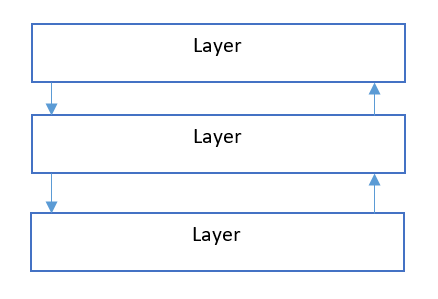In general, a layered system consists of layers with different units of functionality. The essential characteristics of layered systems are that a Layer communicates by means of pre-defined interfaces and communicate only with the layer above or layer below, and the layers above rely on the layers below to it to perform its functions. Layers can be added, removed, modified, or reordered as the architecture evolves. Consider the following diagram of layers:

So, let's start with an example. The REST style allows services to make use of a layered system architecture where we deploy the REST APIs on server A, store data on server ...

